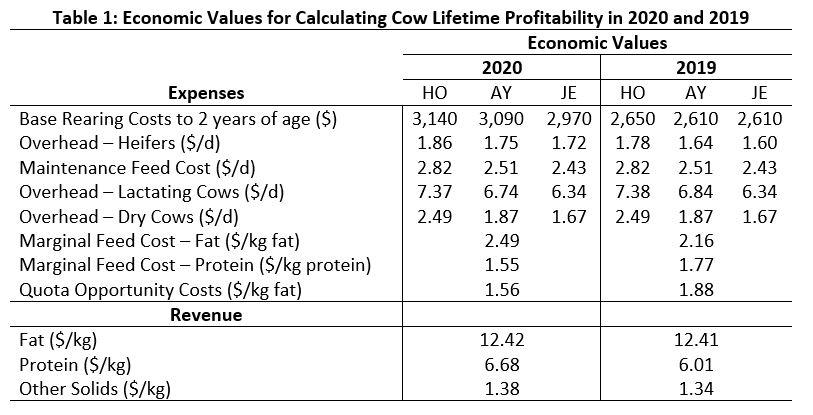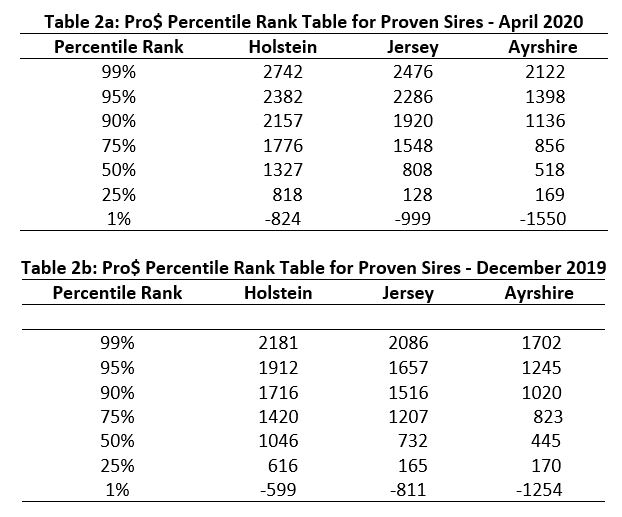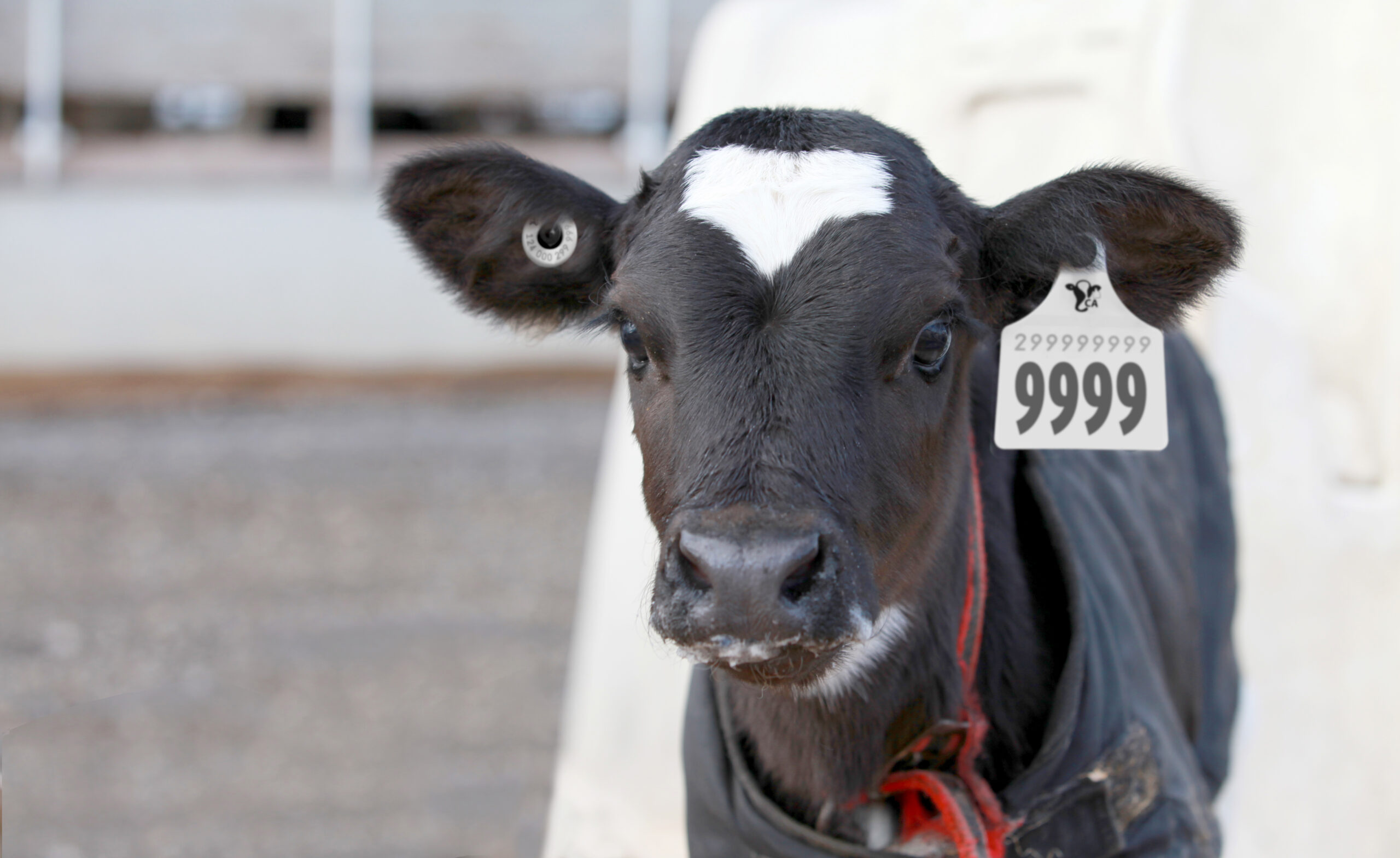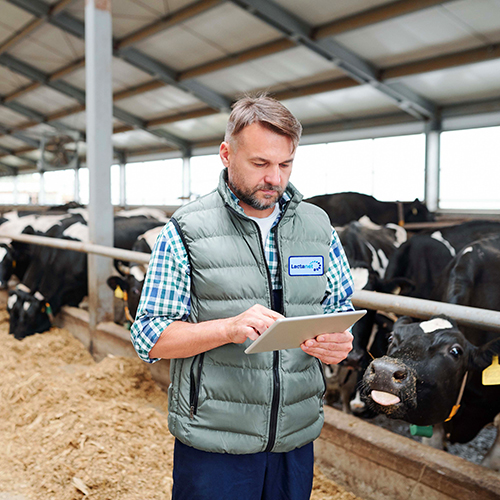Annual Pro$ Update – April 2020 –
- April 27, 2020
A prominent change with the April 2020 official genetic evaluation release is the annual update of the Pro$ formula. Following the revision of Pro$ in 2019, the first since its introduction in 2015, it was decided to implement annual updates to the Pro$ formula incorporating the latest economic values every year in April, coinciding with the genetic base update. An annual update to Pro$ allows the index to remain up-to-date and relevant to the latest milk prices and production costs. The most apparent outcome of the Pro$ changes this year is the increase in the range of Pro$ values, notably a large increase in the Pro$ evaluations for the top bulls and females. This is an expected result given the changes that have been observed in the economics of dairy production used in the Pro$ formulation.
Changing Economic Values
The Pro$ index was developed such that the Pro$ difference between sires was directly related to the extra lifetime profit to six years that their daughters would generate for Canadian producers. The scale of expression used for Pro$ is therefore specifically in Canadian dollars. This scale permits direct comparison between sires to easily understand the expected differences in their daughters’ profit but also makes the index susceptible to fluctuations with annual updates due to variability in the economic values contributing to the overall profitability of Canadian dairy cows.
Each year a Lactanet economist updates the economic values used for DHI cow profitability reporting. These same numbers are used to calculate the average profit to six years of age for Canadian daughters of Holstein, Jersey and Ayrshire sires to determine the Pro$ formula for each breed. Table 1 shows the economic values used in cow profitability calculations for 2020 and the previous 2019 formulation of Pro$. Of note is the increase to rearing costs for all three breeds. The increase is an outcome mostly of the decline in the value of culled cows, which is deducted from rearing expenses such that the profit calculations consider only the net replacement costs. The rise in rearing costs, however, affects the profitability of all cows very similarly. A more consequential difference is in the net profit per kg of protein produced (the earned revenue minus the marginal feed cost for protein), which experienced an increase of around 20%.
The combined result of updates to the economic values and incorporating an additional birth year of cows who have now had the opportunity to reach six years of age, was an observed increase in the average cow profitability values and an overall increase in the variability and range of daughter profit levels. Compared to 2019 calculations, the average cow profitability to six years for the 2020 calculations was approximately $522, $311 and $230 higher for Holstein, Jersey and Ayrshire breeds, respectively. More importantly, the variation observed in cow lifetime profitability increased, especially for Holstein and Jersey. The profits earned by the most profitable, high lifetime production cows had their lifetime profitability increase by a larger degree when considering the new economic values compared to their average contemporaries. In other words, while the majority of cows experienced increased lifetime profits with the changes to the production costs and milk prices, the more profitable females become even relatively more profitable than the average cow. This finding translates directly to the changes observed in Pro$ index values with the recent update and release.

Top Bulls Go Up for Pro$
An eye-catching result coming from the April 2020 release of official genetic evaluations by Lactanet was the large increase in Pro$ proofs amongst the top animals. An examination of the less visible group of animals making up the bottom end of the Pro$ index rankings shows that this group had their Pro$ proofs decline, dropping even further below the breed average. Genetic evaluations for the newly updated Pro$ formula are greater than 99% correlated with results from the previous formula and its relationship with individual traits of interest and reranking of bulls due to formula changes are minimal for all breeds. However, the scale of the updated Pro$ values has widened significantly. For the Holstein breed, the average change for the Top 100 Pro$ sires in December is an increase of $371 this round, with the highest increase being $670. For the Jersey breed, the average change for the Top 50 Pro$ sires in December is an increase of $290 this round, with the highest increase exceeding $700. The Ayrshire breed, which did not exhibit the same large changes in actual daughter lifetime profitability as Holstein and Jersey, had an average change near zero for the Top 50 Pro$ sires in December. The interpretation and scale of expression for the Pro$ index is maintained such that Pro$ is directly related to the expected average daughter profit to six years of age in Canadian dollars.
The range in the magnitude of Pro$ values has increased for the Holstein, Jersey and Ayrshire breeds. With the Pro$ formula update, just like when other changes may occur between releases, it is vital to consider that adjustments may be required on how to interpret resulting Pro$ values. While the comparison of Pro$ values between any two sires remains the same, a previously established minimum Pro$ value for sire selection may not bring the same level of selection intensity as before. Table 2a shows the Pro$ values categorizing various percentile ranks for proven bulls in each of the three breeds for April 2020, which can be compared to the same values for December 2019 evaluations in Table 2b. Differences between the two tables combine the impact of the updated Pro$ formula, a genetic base update and the addition of highly ranked, newly proven sires. The Pro$ value needed for a sire to be within the percentile rankings greater than 50% has increased for all breeds especially in the top rankings, while the decline in Pro$ values for the bottom bulls demonstrates that the entire Pro$ range has expanded in both the positive and negative directions.

Summary
The Pro$ formula was updated in April 2020 to ensure the index remains current with the latest changes to milk pricing and costs of production in Canada. The most visible change with the Pro$ update is that Pro$ values for top animals in the Holstein and Jersey breeds increased notably. The range of observed Pro$ values has broadened with top animals increasing the most and the lowest ranking bulls decreasing to be further below breed average. The current economic values used to derive the Pro$ formula produced higher and more variable cow lifetime profitability values when applied to actual data compared to the previous economic values. Sire Pro$ values directly represent the average difference in profit that their daughters are expected to earn up to the age of six years. Thus, the disproportionate increase in Pro$ values for top sires is explained by the greater average profits expected to be earned by their daughters.












